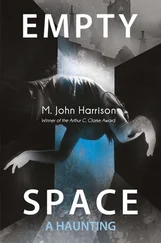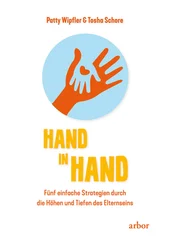Fighting techniques were developed particularly in the monasteries because they owned rich treasures of art and other property that the monks had to defend in this country that was ceaselessly stricken by unrest and war. The term Shaolin kempō includes all techniques that were invented in the monastery itself or came from the surrounding region. Some of them got lost in the course of time, such as the “smashing fist” (tsūhai ken), the “animated fist” (shin i ken) or the “cosmic fist” (rikugō ken).
In the Shaolin monasteries the monks were divided into prayer monks who where specialized in religious studies and warrior monks who mainly practiced fighting techniques. Those to become warrior monks had their hair shaved and wore monks’ habit immediately after entering the monastery. They spent their monastic life mostly with martial exercise rather than with Buddhist studies. The present-day Japanese style of Shaolin kempō (called Shōrinji kempō) practiced as a religious exercise is a historically new phenomenon that appeared after World War II. It was founded by Master Sō Dōshin (1911-1980).
Incidentally, since the Ming period the Shaolin monks were famous rather because of their staff fighting, kompō21 or bōjutsu, than because of their fist-fighting techniques. The Fukien kempō was developed in the Fukien and Kanton provinces in southern China. This martial art, too, is said to originate from a Shaolin monastery – not the Songshan Shaolin but another one built later in the Fukien province.
The Fukien Shaolin temple does not exist anymore. Possible remains were found at different places. That is why its location could not be determined until today. Because the Songshan Shaolin monastery was located north to the Yangtze River and the Fukien Shaolin monastery south to it, their respective martial arts were also referred to as northern and southern Shaolin or northern and southern kempō.
As in other countries, there were times when certain religions were supported and times when they were suppressed by the rulers. So the Shaolin temple, too, experienced times of promotion and prosperity and times of suppression and destruction. There might have been monks who practiced in both temples or others who had to flee the Shaolin monasteries and found shelter in other temples were they shared their knowledge and fighting experience with their hosts. It can be supposed that their knowledge and abilities were spread even among the common people. Chinese distinguished between the “monastery or house” kempō of the monks and the “outsiders” kempō of the commoners. The taijiquan is an example of the latter.
That is how present-day Chinese kempō developed in a long historical process out of different schools and styles of fighting without weapons which influenced each other. But there is no doubt that Chinese heroism in general was inspired by the monks of the two Shaolin monasteries. Like the monks of the Japanese Hieizan monastery at the end of the medieval times they took up arms and intervened in the secular world.
So did Minamoto no Yoshitsune and Musashi Bō Benkei at the end of the Heian period (794-1185) in Japan. Yoshitsune, who as a child was called Ushiwaka-maru, lived in the Kurama monastery north of the capital Kyōto. He studied esoteric Buddhist teachings (mikkyō)22,and started to practice fighting techniques. He was said to have been taught martial arts by the long-nosed mountain spirit of Kurama called Dai Tengu23. To strengthen his body he walked every day from the Kurama mountains to the center of the capital. Once he encountered the fearsome warrior monk Benkei on the Gojō bridge of Kyōto. In a great fight he achieved a victory over him.24 This episode is widely known in Japan because it is part of a famous kabuki25 theater play.
The Influence of the Chinese Kempō on the Japanese and Okinawan Martial Arts
According to old chronicles, kempō was first brought to Japan by a Chinese called Chin Gempin26 in the Edo period. He was said to have learned kempō at the Songshan Shaolin temple and was praised to be a true genius. He was profoundly knowledgeable not only about Confucianism, Buddhism and Taoism but also about arts like calligraphy, brush painting and poetry, or crafts like pottery, making of sweets and preparation of medicinal herbs, and also about acupuncture or moxibustion27. After his arrival in Nagasaki he traveled on the main island Honshū up to the region of present Nagoya. He is reported to have been received three times by the shōgun Tokugawa Iemitsu and to have met many other lords to speak about his knowledge and show his abilities. Fukuno Masakatsu Shichirouemon and Ibaragi Sensai developed the Kitō style of Japanese jūjutsu after having been instructed by Chin Gempin.
There are other styles of jūjutsu whose roots can be found in China such as the famous Yōshin ryū that was created in Nagasaki by the physician Akiyama Shirōzaemon in the beginning of the Edo period after he had studied kempō during a journey in China. The Yōshin style became the basis for the Tenshin Shinyō style, which together with the Kitō style was the material Kanō Jigorō used to create modern jūdō.
But this should not lead to the conclusion that the original jūjutsu styles were directly derived from Chinese kempō. Techniques of unarmed fighting had existed in Japan since ancient times. The Takenouchi style, which is considered to be the oldest in Japanese jūjutsu originated from shortsword techniques. These techniques were taught by Takenouchi Hisamori. According to a myth, he had learned them from a hermit with long white hair who appeared while he was praying to the god of Atago to make him a master of martial arts. This happened in the beginning of the feudal wars in the 16th century, 100 years before Chin Gempin came to Japan.
Of course Chinese kempō had a strong influence on the Japanese jūjutsu. Although it was not its origin, it nourished and inspired its development. However, in jūjutsu highly dangerous blows (atemi) are not used and thus almost not practiced in order to avoid fatal injuries. But throwing and joint-locking techniques are very important. In particular, jūjutsu was aimed for supporting the fight with weapons. Since the beginning of the age of the samurai in the 12th century sword techniques had become crucial, and the fighting techniques with bare hands only played a secondary role.
It is also often said that the origin of karate was the Chinese kempō. Because of similarities with regard to techniques and terms this might be plausible, but there are no written records supporting this assumption, and consequently it cannot be considered as proven. Since ancient times there has been a kind of kempō on the island of Okinawa which was simply called “hand” (ti; Jpn. te or de), whereas Chinese kempō was called “Chinese hand”, tōde.
Since the middle of the 14th century, the Ryūkyū kingdom was tributary to the Chinese Ming dynasty. The relations with China became closer than those with Japan. People from the Ryūkyūs who had traveled to China to study or as members of diplomatic missions were not only influenced by Chinese culture but also learned martial arts. Of course, many Chinese came to Okinawa, too, and imparted their knowledge to the islanders. The bodyguards and other escorts who accompanied the Chinese envoys seem to have played a special role in transferring fighting skills to the Okinawans. They were highly trained and experienced elite soldiers because they had to defend the missions against the almost omnipresent pirates during the sea passages. In the history of the Ryūkyū islands, 23 of such Chinese missions were reported. Altogether about 500 Chinese came to Okinawa in this way. When the Chinese diplomatic missions arrived on Okinawa, welcome ceremonies were held and the bodyguards performed Chinese kempō kata, so-called tao. There are some kata in the Shuri-te, like the Wanshū and Kōsōkun kata, which are said to have been named after the bodyguards who taught them to the islanders.
Читать дальше












